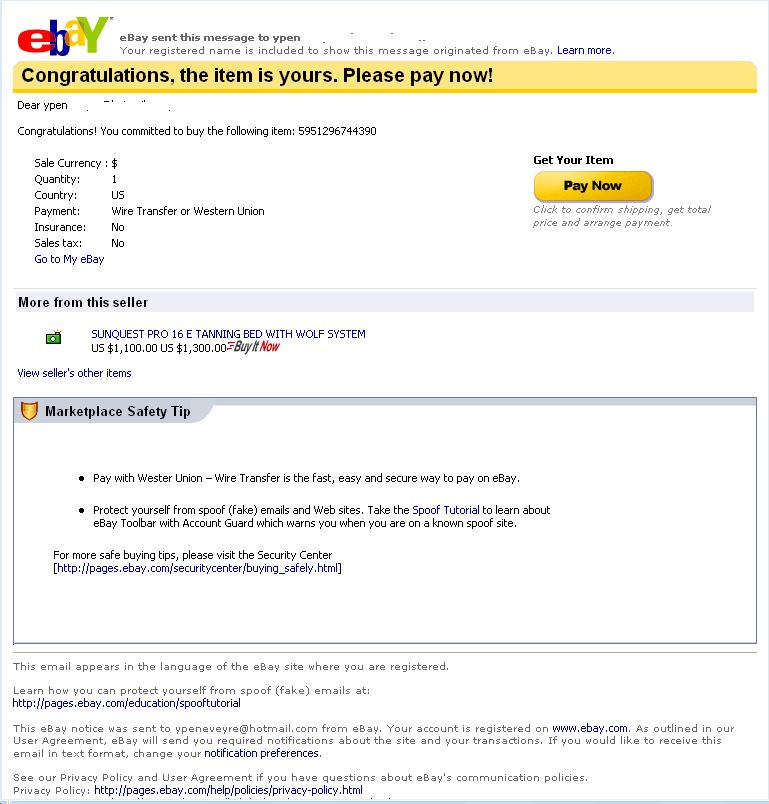Couple of days ago, I received an e-mail on one of my e-mail address I use to receive spam warning me that I won an auction on e-bay. It sayd I commited to buy a tanning bed and it invited me to pay it by a connection on their web site using a button available in the e-mail.

So far, no problem. The only odd thing was that, even I have an e-bay account, I do not use that e-mail address and more strange, I never made any bid for a tanning bed.
Then, this was a clear attempt of phishing, and let’s demonstrate how it works.
First, what is phishing ?
Phishing is a technic used by people to obtain personal and/or confidential information from the victims by claiming they are from a banking company or somebody you trust.
In this case, it was eBay, a well-known target for this kind of attack.
In the body of the e-mail, there was a button redirecting you to a fake e-bay web-site to sign-in and enter your user id and password.
This button opened a web page at http://www.ebay.com.item3-login.com (do not try this link, the web site is already offline) which had exactly the same look-and-feel as the original one. That URL might wake up a red light in the head of people who knows how internet works.
In fact, if we carefully look at the URL, we do not access to the eBay web site (in this case, it should be www.ebay.com), but, instead, a web site named item3-login.com. This domain name is owned by a person who has a really strange phone number, only composed of 4 and 7.
With the login form, the owner of the site can get user ids and passwords from a lot of users.
These last months, lot of e-mails coming from supposedly banking companies are received by people, requesting to verify some personal informations. Here, it must be said that banks do not communicate this kind of request by e-mail, but only by letters.
A communication from the BCV about phishing : http://www.bcv.ch/html/bcvnet/conseils-securite/securite-phishing.html

0 Comments